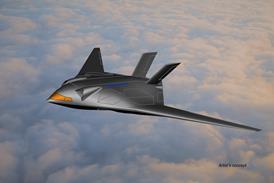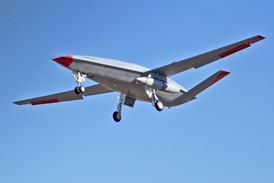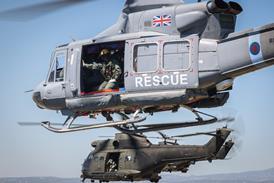French hybrid-electric aircraft developer VoltAero is maintaining its end-2025 goal for certification of its five-seat Cassio 330 as it gears up for a busy year of testing, including a hotly anticipated maiden sortie.
Speaking to FlightGlobal at the Aero Friedrichshafen trade show on 17 April, where the company displayed a wingless mock-up of the Cassio 330, chief technology officer Jean Botti said the firm now expects the prototype’s maiden flight “at the end of this year”, around 12 months later than originally planned.
Supply chain issues – widespread across the industry – have also plagued the company, but Botti is confident the long-term effects will be minimal.
The initial prototype will be used to validate the aircraft’s configuration and new Duc Helices-supplied propeller, and will run solely on its Kawasaki thermal engine.

“It will fly in thermal only, not electric yet, because we want to validate the flight characteristics of the aircraft,” he says. ”It’s a new design, with new aerodynamics. We want to make sure we separate the variables; we will test the new propeller, and then once this is done, we will implement the powertrain that is being tested right now on the bench.”
The company has brought its Cassio S demonstrator aircraft to Aero Friedrichshafen for the first time, where it made its debut at the event’s e-aircraft air show on 19 April. VoltAero says the modified Cessna 337 Skymaster has so far performd “more than 220 flights while covering a total distance of 10,000km and visiting 40 airports”.
“Our demonstrators are flying, we now have hundreds of hours, and the flights have validated our powertrain expectations,” Botti says. “We made it fly with 100% biofuel made out of wine waste.” That fuel allowed 65% reduction of carbon dioxide emissions, he adds.
“So the combination of the biofuel plus electric [propulsion] for take-off and landing, we got ab 82% reduction in CO2 in an airplane that weighs two tonnes.”
“We have all the potential developed for the future of Cassio 330, and we are halfway to certification – we have passed two steps out of four – and we hope to be done by the end of 2025,” Botti says.

The Cassio 330 will be certificated in Europe first, but the comapny aims to move quickly get to secure validation by the US Federal Aviation Administration so that it can also quickly take on the largest aviation market in the world. VoltAero plans to use partners in the US to build this aircraft locally, Botti adds.
The company is also currently building a new final assembly facility at Rochefort airport, north of Bordeaux, France, which is expected to be completed in July. That facility will be capable of producing 150 aircraft per year, with the first example due to roll out in 2026, Botti says.
VoltAero unveiled the Cassio 330 at last year’s Paris air show. It is the first in a family of aircraft that will have between five and 12 seats, tailored for numerous applications including air taxi, commercial flights, logistics and private ownership.
Botti says, as of this week, VoltAero has taken pre-orders for 218 aircraft. “That’s why we want to fly this year – we want to turn those into firm orders,” he says.
VoltAero’s hybrid-electric module combines the Kawasaki Motors-supplied 150kW (201hp) thermal engine, Safran EngineUS 100 electric motor and a gearbox from French transmission specialist Akira. Batteries are supplied by US firm Electric Power Systems.
In the cockpit, the aircraft has an Avidyne avionics suite which features 14in (35.5cm) screens in a dual primary flight display/multi-function display configuration with 4k resolution and processor performance improvements over older systems.
The Kawasaki engine’s basis is a motorcycle powerplant, the Ninja H2R, which is being modified and optimised for an aviation context, Jamie Imai, Manager of business planning at Kawasaki, tells FlightGlobal at Aero Friedrichshafen.
Kawasaki’s aero-piston-engine roadmap plans for the inline-six turbo gasoline engine to be available by 2025, with type certification by 2030. It’s also developing a hydrogen version that will be available by 2029, with certification anticipated by 2035.
“The engine has been around for quite some time. It’s a proven design, we know it works very, very well, and the reliability is excellent,” Imai says.
“But we also understand there is a difference between a motorcycle engine and an aviation engine. For example on a motorcycle, the customer wants an engine that is set so that they can enjoy it from the lowest RPM all the way to the highest RPM. Whereas on an aircraft, you need maximum power for take-off, but once you’re an airborne, you would rather have your consistent RPM for fuel savings.”
Kawasaki also became a strategic investor in VoltAero last May, joining Series B funding for the development, production and certification of the Cassio aircraft family.



















